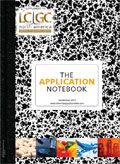High Precision Pesticide Analysis in Produce with GC Triple Quadrupole and U-SRM Mode
Residuals of pesticides widely used in agriculture are monitored in foods for human consumption through the use of statutory maximum residue levels (MRLs). Regulation EC 396/2005 adopted in the European Union sets MRLs for over 500 pesticides in over 300 food commodities, many at a default value of 0.01 mg/kg (the typical routine analytical method limit of determination).
Residuals of pesticides widely used in agriculture are monitored in foods for human consumption through the use of statutory maximum residue levels (MRLs). Regulation EC 396/2005 adopted in the European Union sets MRLs for over 500 pesticides in over 300 food commodities, many at a default value of 0.01 mg/kg (the typical routine analytical method limit of determination). Thus, food safety laboratories must curb costs and turnaround times (often to <48 h) while testing a wide array of foods for a large number of pesticide residues at concentrations levels 10 lower than 0.01 mg/kg. This is most often achieved using multiresidue methods with a combination of LC–MS-MS and/or GC–MS techniques to determine pesticide residues in a single generic solvent extract of the sample.
One such example is the QuEChERS (quick, easy, cheap, effective, rugged, and safe) procedure, which is based on acetonitrile extraction and dispersive solid phase extraction. After the QuEChERS extraction, a solvent exchange is made to facilitate the GC injection. Although the QuEChERS extraction technique provides a fast turnaround time for a large number of samples with small sample volumes in the range of 10 g, the heavy matrix load of QuEChERS extraction requires increased robustness of the GC inlet system and increased selectivity from the MS-MS analyzer. Described here is a high-quality, low-level analysis of pesticides in produce samples using the Thermo Scientific TSQ Quantum XLS Ultra GC–MS-MS system.
For most of the pesticide compounds included in this method, the complete list of the compounds with their respective SRM transitions have been downloaded from the Pesticides Method Reference CD (provided with the manual, P/N 120390) into the instrument acquisition method. Each transition has been determined for optimal sensitivity and selectivity, with the complete list documented for TSQ Quantum XLS Ultra™ users.
Over 400 pesticides have been monitored in several matrices, such as wheat, black currants, and cucumber. The results of the most challenging pesticides in terms of activity and response are highlighted, showing calibration curves, repeatability, and ion ratio stabilities.
The TSQ Quantum XLS Ultra is able to perform SRM with a higher mass resolution (0.1 Da) setting to allow for better selectivity. Not all pesticides in all matrices benefit from a higher mass resolution setting, but depending on the matrix and the compound analyzed, there can be a significant improvement on the signal-to-noise ratio. Some examples are shown in the Advanced GC–MS-MS Experiment section of this application note.
Method Conditions and Sample Preparation
The experimental configuration, sample preparation procedures, more experimental results, and references are described in Thermo Scientific Application Note 52279.

Figure 1: Comparison of U-SRM and standard SRM for pentachloroanisole and isodrin in wheat at 10 ppb level. Top: The chromatogram in U-SRM SRM (Q1 FWHM at 0.1 Da). Bottom: The same sample in standard mode (Q1 FWHM at 0.7 Da).
Conclusions
- Advances in HyperQuad technology offer increased analytical performance for routine applications such as pesticide analysis.
- A true multicompound method was developed for over 400 pesticides using timed SRM, easily transferable from a spreadsheet.
- A high level of accuracy and precision was reached during data evaluation on several cornerstones of analysis, such as repeatability, linearity and ion ratio stability.
- All examples shown are the more challenging pesticides faced analytically in terms of stability, activity, and response.
- This resolution technology development allows for advanced GC–MS-MS operations to be performed, such as U-SRM to further increase selectivity in complex matrices. This not only improves quantitative measurements, but it is also amenable when using a reduced sample cleanup typical for QuEChERS methodologies.
Receive the complete application note at: www.thermoscientific.com/AN52279
Thermo Fisher Scientific Inc.
2215 Grand Ave. Pkwy, Austin, TX 78728
tel. (800) 532-4752
Website: www.thermoscientific.com/GCMS

Separation of Ultra-Short and Long Chain PFAS Compounds Using a Positive Charge Surface Column
December 11th 2024A separation of ultra-short and long chain PFAS (C1-C18) is performed on a HALO®PCS Phenyl-Hexyl column along with a HALO®PFAS Delay column which demonstrates excellent retention for both hydrophilic and hydrophobic analytes.















